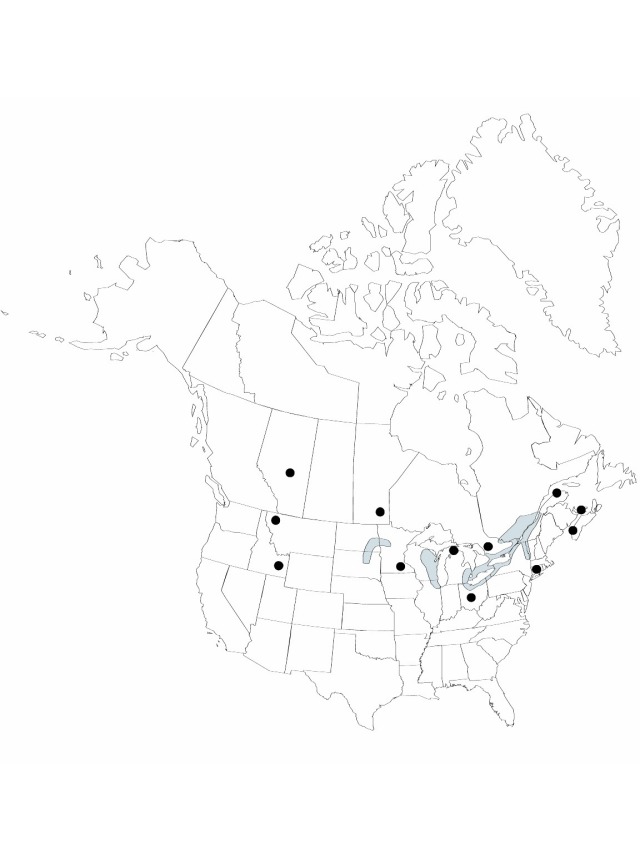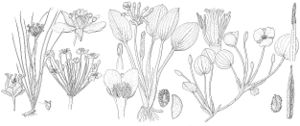Herbs, to 150 cm. Leaves linear, to 2.7 m. Inflorescences with 20–25 flowers; scape to 150 cm. Flowers 2–2.5 cm wide; pedicels 4–10 cm; outer tepals elliptic, 6–7.5 × 2–2.5 mm, apex acute, inner tepals oblanceolate, 9–11.5 × 4.5–6 mm, apex obtuse, erose; filaments 3–4.5 mm, anthers 1 mm. Follicles 1 cm.
Phenology: Flowering summer–fall.
Habitat: Mud and shallow water of streams, lakes, and ditches
Elevation: 0–700 m
Distribution

NaturalizedAlta., Man., N.S., Ont., P.E.I., Que., Conn., Idaho, Ill., Mich., Minn., Mont., N.Y., N.Dak., Ohio, Pa., S.Dak., Vt., Wis., Eurasia.
Discussion
The name Butomus umbellatus f.orma vallisneriifolius (Sagorski) Glück has been used for plants that grow totally submersed or have floating leaves. Field transplant experiments with North American plants (R. L. Stuckey et al. 1990) have demonstrated that the non-flowering submersed form can be converted to a flowering mudflat form, and that flowering terrestrial plants can be transformed into non-flowering submersed ones. Consequently, B. umbellatus f. vallisneriifolius is a deep-water growth form and should have no taxonomic systematic status.
Two species, Butomus umbellatus and B. junceus Turczaninow, have been recognized in the natural range of the genus (L. C. Anderson et al. 1974), the former from Europe and western Asia, and the latter from eastern Asia. Reportedly, the distinguishing features are shorter scapes, fewer flowers, and a straight stigma for B. junceus as opposed to taller plants, more flowers, and curved stigmas for B. umbellatus.
Studies of Butomus in North America (L. C. Anderson et al. 1974) indicated that apparently the genus has become naturalized in North America at two separate locations, one near Detroit and another in the St. Lawrence River region. It is possible that plants naturalized in the St. Lawrence River region originated in eastern Asia, and those naturalized in the Detroit area originated in Europe or western Asia.
A map of Butomus in North America, prepared by R. L. Stuckey (1994), showed that he accepted two species. His map essentially had everything east of Niagara Falls as B. junceus and everything west of the Falls as B. umbellatus. At this time, I do not accept two species in the genus. Should two species be accepted, however, determinations would essentially follow the distribution given by Stuckey. He included dots for B. umbellatus from Indiana and British Columbia. I have not observed specimens from those two areas although the species is certainly to be expected in Indiana, and eventually in British Columbia if it does not already occur there.
Butomus umbellatus was first collected in North America near Laprairie on the St. Lawrence River in 1905; it was first observed in 1897 (R. L. Stuckey, pers. comm.). West of Niagara Falls, the taxon was first collected near Detroit in 1930 by O. A. Farwell, although he noted on the specimen, "Has been here since before 1918!!!" (R. L. Stuckey 1968).
Selected References
None.
